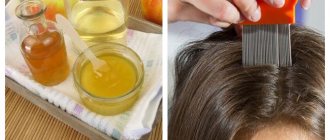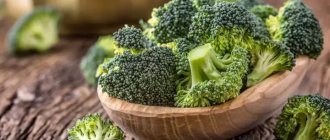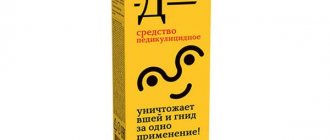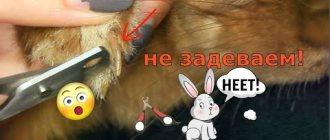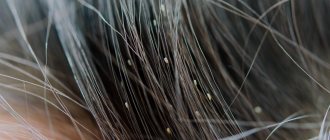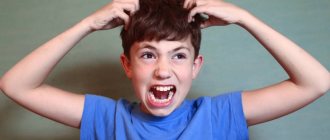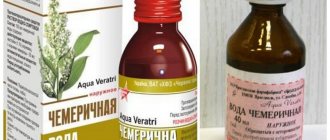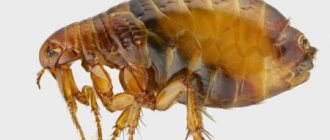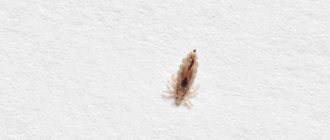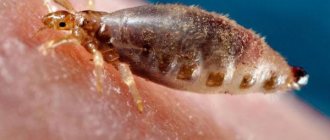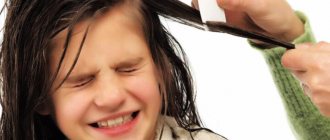When faced with excessive peeling of the scalp for the first time, a person may mistake the keratinized particles of the epidermis for lice eggs and be treated incorrectly. Doctors and cosmetologists know best how to distinguish dandruff from nits, so consulting a specialist will not be superfluous. However, there are effective ways to deal with the problem at home.
Dandruff is often confused with lice because both diseases often have the same symptoms.
What is dandruff
Dandruff is the excessive shedding of the top layer of the scalp over a long period of time. This is not an independent pathology, but a syndrome that develops due to certain disorders in the body. It appears as white, oily flakes of dead skin of varying sizes and shapes dotting the hair and shoulders. It is not contagious and does not entail dangerous consequences.
The epidermis (upper layer of skin) is constantly renewed - this is the norm. However, in a healthy body this happens almost unnoticeably, and under the influence of some unfavorable factors, the degree of peeling increases many times over. And we’re not just talking about diseases - dandruff can be caused by:
- • shampoo that is not suitable for the hair type (dries out the scalp);
- • non-compliance with personal hygiene rules (rarely washing hair);
- • poor nutrition (excess fatty and sweet foods in the diet);
- • sudden change in ambient temperature;
- • prolonged exposure to direct sunlight;
- • aggressive products used for dyeing or curling hair.
However, most cases of dandruff are a sign of general ill health in the body. A fungus, Pityrosporum ovale, always lives on human skin, an increase in the number of which leads to the rapid death of the epidermis and its exfoliation.
Factors that stimulate fungal growth:
- • seborrheic dermatitis (more common among men (since the work of the sebaceous glands is determined by the “male” hormone - testosterone), debuts mainly in adolescence;
- • psycho-emotional stress;
- • chronic infectious diseases;
- • immunodeficiencies;
- • disturbances in the functioning of the endocrine system;
- • hypovitaminosis;
- • heredity.
Sometimes, when first faced with the problem of excessive peeling of the skin, a person confuses it with lice. Let's consider what kind of pathology this is, so that we can then figure out how to distinguish dandruff from lice
Other diseases from the group Infectious and parasitic diseases:
| Abdominal actinomycosis |
| Adenovirus infection |
| Adenoviral enteritis |
| Acanthocheilonematosis (dipetalonematosis) |
| Actinomycosis |
| Amoebiasis |
| Amoebic lung abscess |
| Amoebic liver abscess |
| Anisakidosis |
| Hookworm disease |
| Hookworm |
| Argentine hemorrhagic fever |
| Ascariasis |
| Aspergillosis |
| African trypanosomiasis (sleeping sickness) |
| Babesiosis |
| Balantidiasis |
| Bartonellosis |
| Bejel |
| Rabies |
| Blastomycosis Gilchrist |
| Blastomycosis South American |
| Ross River disease (fever) |
| Brill-Zinsser disease |
| Cat scratch disease |
| Creutzfeldt-Jakob disease |
| Lyme disease |
| Chagas disease (American trypanosomiasis) |
| Bolivian hemorrhagic fever |
| Botulism |
| Brazilian purple fever |
| Brugioz |
| Brucellosis |
| Typhoid fever |
| Varicella (chickenpox) |
| Viral warts |
| Viral hepatitis A |
| Viral hepatitis B |
| Viral hepatitis E |
| Viral hepatitis C |
| Viral conjunctivitis |
| Visceral leishmaniasis |
| Sudden exanthema |
| Relapsing fever |
| Wuchereriosis (elephantiasis) |
| Gas gangrene |
| Hemorrhagic fever with renal syndrome |
| Ebola hemorrhagic fever |
| Hemorrhagic fevers |
| Haemophilus influenzae infection |
| Herpetic tonsillitis (herpetic tonsillitis) |
| Herpetic eczema |
| Herpetic meningitis |
| Herpetic pharyngitis |
| Hymenolepiasis |
| Hirudinosis |
| Pulmonary histoplasmosis |
| Gnathostomiasis |
| Flu |
| Dicroceliosis |
| Dipylidiasis |
| Diphyllobothriasis |
| Diphtheria |
| Dracunculiasis |
| Yellow fever |
| Zygomycosis (phycomycosis) |
| Yersiniosis and pseudotuberculosis |
| Isosporosis |
| Erythema infectiosum (fifth disease) |
| Infectious mononucleosis |
| Campylobacteriosis |
| Intestinal capillariasis |
| Pulmonary capillariasis |
| Hepatic capillariasis |
| Intestinal intercalate schistosomiasis |
| Manson's intestinal schistosomiasis |
| Clonorchiasis |
| Mucocutaneous leishmaniasis (espundia) |
| Cutaneous leishmaniasis |
| Cutaneous myiasis |
| Whooping cough |
| Coccidioidomycosis |
| Colorado tick fever |
| Molluscum contagiosum |
| Measles |
| Rubella |
| Cryptococcosis |
| Cryptosporidiosis |
| Crimean hemorrhagic fever |
| Q fever |
| Kyasanur forest disease |
| Legionnaires' disease (Legionnaires' disease) |
| Leishmaniasis |
| Leprosy |
| Leptospirosis |
| Listeriosis |
| Dengue fever |
| West Nile fever |
| Lassa fever |
| Marburg fever |
| Rat bite fever (Sodoku) |
| Rift Valley fever |
| Chikungunya fever |
| Loiasis |
| Pediculosis pubis |
| Lobomycosis |
| Giardiasis |
| Malaria |
| Mansonellosis |
| Slow viral infections |
| Melioidosis |
| Meningococcal infection |
| Miaz |
| Mycetoma |
| Mosquito fever (Pappataci fever) |
| Urogenital schistosomiasis |
| Smallpox |
| Necatoriasis |
| Nocardiosis |
| Trench fever |
| Omsk hemorrhagic fever |
| Onchocerciasis |
| Opisthorchiasis |
| Shingles (herpes zoster) |
| Opportunistic mycoses |
| ARVI |
| Smallpox rickettsiosis |
| Acute herpetic (aphthous) stomatitis |
| Acute herpetic gingivostomatitis |
| Acute polio |
| Human paragonimiasis |
| Paracoccidioidomycosis |
| Paratyphoid C |
| Paratyphoid A and B |
| Parvovirus infection |
| Mumps meningitis |
| Mumps orchitis |
| Mumps pancreatitis |
| Mumps encephalitis (mumps encephalitis) |
| Pasteurellosis |
| Pediculosis (lice) |
| Pediculosis of the body |
| Penicillosis |
| Pint |
| Foodborne illnesses |
| Pneumocystis (Pneumocystis pneumonia) |
| Cold |
| Rocky Mountain spotted fever |
| Retroviral infection |
| Erysipelas |
| Rotavirus enteritis |
| Salmonellosis |
| Glanders |
| anthrax |
| Toxic shock syndrome |
| Waterhouse-Friderichsen syndrome |
| Scarlet fever |
| Sparganosis |
| AIDS (acquired immune deficiency syndrome) |
| Spirillosis |
| Sporotrichosis |
| Staphylococcal food poisoning |
| Tetanus |
| Streptobacillosis |
| Strongyloidiasis |
| Taeniasis |
| Toxoplasmosis |
| Trichinosis |
| Trichostrongyloidosis |
| Trichocephalosis (trichurosis) |
| Tropical pulmonary eosinophilia |
| Tuberculosis of peripheral lymph nodes |
| Tularemia |
| Tungiasis |
| Fascioliasis |
| Fasciolopsidosis |
| Filariasis (filariasis) |
| Lymphatic filariasis |
| Yaws |
| Cholera |
| Chromomycosis |
| Chronic viral hepatitis |
| Cysticercosis |
| Cysticercosis of the eye |
| Cysticercosis of the brain |
| Cytomegalovirus infection |
| Cytomegalovirus pneumonia |
| Cytomegalovirus hepatitis |
| Cytomegalovirus mononucleosis |
| Scabies |
| Plague |
| Cervicofacial actinomycosis |
| Shigellosis |
| Schistosomatid dermatitis |
| Schistosomiasis (bilharzia) |
| Japanese schistosomiasis |
| Enterobiasis |
| Enterovirus infection |
| Epidemic myalgia |
| Mumps (mumps) |
| Epidemic typhus |
| Erysipeloid |
| Echinococcosis |
| Pulmonary echinococcosis |
| Liver echinococcosis |
| Escherichiosis |
| Vincent's ulcerative necrotizing stomatitis |
What is pediculosis
This is a parasitic disease caused by a louse. Only one type of pathogen lives on the scalp - the head louse (Pediculus humanus capitis). It is a wingless insect measuring 2-3 mm that cannot jump or fly. It holds tightly to the hair thanks to the claws on its legs, moves quickly, feeds exclusively on blood: pierces the scalp with its mouthparts, sucks out the blood.
A louse bite often goes unnoticed because a special anesthetic substance gets into the wound with the insect's saliva. Itching occurs only in every 5th patient, and not immediately, but after some time.
Life cycle of a parasite
A sexually mature female louse lays 3-8 eggs daily - nits, gluing them with one end to the hair root near the scalp with a special substance. The nit looks like an oval formation up to 1 mm in size, with a cap. After 7-9 days, a larva emerges from the nit, which after another 8-10 days reaches sexual maturity and can lay eggs on its own. An adult lives up to 28 days
It is interesting to know that after the larva emerges from the egg, its shell remains attached to the hair, but is already empty. Since the hair is continuously growing, and the development of the embryo in the egg lasts about a week, empty eggs are not found near the skin itself, but at a distance of 1-3 cm from it.
Differences in Concepts
Dandruff
- malfunctions of the sebaceous glands, which leads to disturbances in the processes of peeling of the upper keratinized layer of the scalp;
- excessive dryness of the skin;
- the vital activity of the fungus (oval pityrosporum), which actively multiplies due to malfunctions of the sebaceous glands and causes severe peeling of the skin.
The active activity of microorganisms can also be a consequence of a lack of vitamin B, chronic diseases, stress, mental disorders, metabolic disorders, and wetting of hair when combing.
Seborrhea
- the appearance of small scales on the strands;
- severe flaking of the scalp, which is accompanied by itching;
- a decrease in the brightness of the color of the curls and their acquisition of excessive gloss;
- hair loss;
- an increase in the number of white grains due to a more intense process of keratinization of the dermis as a result of the lack of proper treatment;
- the spread of dandruff to the eyebrows and interlash space at an advanced stage of the pathology.
- Dry
. Appears on dry skin as a result of insufficient production of natural subcutaneous fat. White “powder” directly falls out of the hair when combing or the slightest movement. A person suffers from a feeling of skin tightness, itchy scalp, dry hair and split ends. - Fat
. In this case, the white scales stick together and cause severe itching. 2-3 hours after washing your hair, your hair still looks dirty and dull. Unlike dry dandruff, oily dandruff is hardly noticeable. When the skin is extensively damaged, the scales flake off and damage the hair, which can cause it to fall out. Oily dandruff occurs as a result of excessive sebum production and the proliferation of a fungal infection.
Nits
- oblong shape with a cap at the base;
- white-gray color;
- size about 1 mm.
Unsightly cocoons cannot be washed off by regular hair washing, since the sticky substance guarantees their secure hold. Moreover, it will be difficult to remove them even with your fingernails.
- millimeter grains are visible on the head, which resemble dandruff;
- severe itching is felt in the area where the capsules are located;
- hair seems dirty even after washing.
- Nits
. During one inspection, on a head affected by lice, you can find from 50 to 100 eggs leading an independent lifestyle. Their incubation period is 5-8 days from the moment the insects mate. The temperature for their ripening should be high - about 30-35°C. - Larva
. Inside the shells there are dark formations - larvae, which develop over 14 days. As soon as they mature in the shell, they begin to gnaw through their cocoon and get out. When the parasite leaves, the shell does not dissolve and continues to be on the strands. So, if the necessary measures are not taken in time to destroy the bloodsuckers, you can end up with a 4 mm snowball on your head. In extreme cases, serious infections develop. - Louse
. This is an adult that sucks human blood, actively mates and lays about 4 eggs called nits every day. Lice are small insects whose body length is no more than 4 mm. They can cause the spread of pediculosis, which will rapidly progress due to the rapid reproduction of parasites.
All age groups are susceptible to head lice, but it is more often observed in children and adolescents. With severe infestation, parasites can also be localized on the eyebrows, mustache or beard. This condition cannot be ignored, since pediculosis is contagious and is easily transmitted through household contact.
Conditions of existence
Lice feel comfortable at a temperature of 28-30°C - they move quickly, suck blood every 2 hours, and lay eggs. When the temperature drops to 20°C, the vital processes of the insect slow down, but the individuals do not die. When the temperature drops to 10°C and below, they cannot exist and leave the host’s body. They do not live outside humans either - fasting for 2 days leads to the death of the parasite. High (more than 30°C) and low (-20°C or less) temperatures will help destroy insects.
Transmission routes
There is only one method of transmission of lice - through direct contact of the hair of an infected person with the hair of a healthy person, the insect changes its host. Previously, it was believed that the sharing of personal hygiene items (comb, hair ties, hats) played an important role in the spread of the disease; today it has been proven that the frequency of cases of such transmission is negligible, and the only thing that matters is sleeping in the same bed on shared bedding, using a shared pillowcase.
Children of preschool and primary school age are more likely to suffer from head lice - there are many known cases where parents discovered lice on a child who had just returned from kindergarten.
Symptoms of lice
The main symptom of the disease is the actual presence of adult insects and eggs in the hair. Lice “live” mainly in the temporal and occipital regions, that is, where the hairline is most developed.
- • In some cases (from 18 to 34%), parasite bites are accompanied by itching, which occurs as a result of saliva containing allergic components entering the bloodstream.
- • A person, trying to get rid of itching, scratches the skin, after which marks remain, often covered with bloody crusts.
- • Redness and papules are found at the sites of bites (the so-called “papular urticaria”)
- • If the process lasts for a long time, signs of chronic dermatitis or eczema appear.
If there are a lot of lice, the active processes of their life activity lead to the formation of a “tangle”, which appears due to the gluing of hair with serous-purulent exudate released from the bite sites.
Which doctors should you contact if you have Pediculosis (lice):
Dermatologist
Is something bothering you? Do you want to know more detailed information about Pediculosis (lice), its causes, symptoms, methods of treatment and prevention, the course of the disease and diet after it? Or do you need an inspection? You can make an appointment with a doctor - the Eurolab clinic is always at your service! The best doctors will examine you, study external signs and help you identify the disease by symptoms, advise you and provide the necessary assistance and make a diagnosis. You can also call a doctor at home. The Eurolab clinic is open for you around the clock.
How to contact the clinic: Phone number of our clinic in Kyiv: (+38 (multi-channel). The clinic secretary will select a convenient day and time for you to visit the doctor. Our coordinates and directions are listed here. Look in more detail about all the clinic’s services on its personal page.
How to distinguish dandruff from lice
For a person who has no information and is faced with such a problem for the first time, skin flakes and nits are practically indistinguishable. Let's try to figure out how lice eggs differ from dandruff...
- 1. The exfoliated epidermis is located along the entire length of the hair, and nits are located exclusively at its base and 1-2 cm from the skin, since this is where the temperature optimal for their existence and development is maintained.
- 2. The size and shape of dead epidermal scales varies widely from fractions of a millimeter to entire layers, while louse eggs are all the same size - about 1 mm, and have an ovoid shape.
- 3. You can easily shake dandruff from your hair, but the nit is attached to it with an adhesive substance, so you will have to make an effort to remove it.
- 4. When you squeeze the egg with your fingers, you will hear a clicking, bursting sound, which is not typical for peeling elements.
- 5. When washing your hair, dandruff is removed from the surface of the skin and hair without any residue, while the parasite eggs remain firmly attached to their original places. The same goes for combing: the exfoliated epidermis is removed with a comb, but nits are not.
Range
It is best to consult a dermatologist before purchasing shampoo at the pharmacy, who will help you choose the most suitable one for each individual case.
Effective shampoos for the treatment of dry dandruff of scalp hair are “Friderm-plus”, “Friderm-tar”, “Keto-Plus”, “Squanorm”.
They help soften the scales, facilitating the process of their peeling and subsequent removal.
They have both antifungal and antibacterial effects.
Seborin, Algopix, and Nizoral are often recommended for use.
Sebopirox-911 shampoo has a powerful effect that not only guarantees getting rid of dry dandruff, but also prevents its consequences.
Its action is based on the drug octopirox, which suppresses pathogenic microflora - the main source of dry seborrhea. It also has a number of other positive qualities: relieves irritation, itching, and does not injure the natural protective layer of the skin.
When treating dry dandruff, many doctors prescribe the drug Nizoral, which is quite common and often found in pharmacies. It belongs to antimycotic drugs and has a pronounced anti-inflammatory effect.
The basis of the composition is ketonazole. It has been proven to be highly effective not only in the fight against severe forms of seborrhea, but even against different types of lichen.
Its advantages are the high intensity of the therapeutic effect, non-toxicity, and the absence of contraindications for use by pregnant women and young children.
At the same time, shampoo dries out the skin quite a lot, so its use for dry dandruff should definitely be combined with the use of nourishing masks.
An analogue of this shampoo is Dermazol. Its action allows you to block the chemical synthesis that leads to the growth of mycelium fungus, but is not recommended for frequent use more than once a week.
You can often see Fitoval shampoo in pharmacies. The advantage of the drug is the presence of extracts and extracts of natural medicinal plants. The composition may include nettle, wheat, sorrel.
Panthenol and lecithin included in the composition prevent the appearance of inflammation and bacteria. It has a standard scheme of use, in the form of a one and a half month course, no more than twice a week.
Known for the use of thermal waters in the production of medicines, Vichy also produces medicinal shampoos.
The healing water is enriched with the components salicylic acid and selenium disulfide.
The advantage of the drug is the possibility of its use for sensitive skin and allergies.
The action relieves irritation and itching, slows down peeling of the skin.
Cloran shampoo received very good recommendations on the Russian market. It contains plant components: Chinese peony roots, nasturtium extract. Includes antifungal components, vitamin complex. Allows you to stop inflammation and reduce the symptoms of seborrhea. In addition, it stimulates hair growth.
Important: The positive qualities of all medicinal shampoos are the presence of active ingredients that effectively affect the processes of sebum secretion on the skin. Their disadvantages are the dosage limitation - no more than twice a week, and after a month - no more than twice a month.. Reference: Any drug against dry dandruff, produced in the form of shampoo, will be quite specific, it is able to completely eliminate only some -one cause of the disease
Help: Any drug against dry dandruff, produced in the form of shampoo, will be quite specific; it can completely eliminate only one cause of the disease.
Check out reviews of other anti-dandruff shampoos:
- cosmetic: Head & Shoulders, Clear Vita ABE, Alerana, Horsepower, tar shampoo;
- pharmacy: Sulsena, Sebozol, Ketoconazole, shampoos with zinc.
Read tips on how to choose the right shampoo for a man or woman, as well as for oily dandruff.
Can you have dandruff and lice at the same time?
For some reason, many people believe that one person must suffer from either dandruff or lice. It is important to understand that no, this is not true - these conditions can be detected simultaneously, for example:
- • the young man could well suffer from seborrheic dermatitis and become infected with pediculosis from his sister, who returned from the garden;
- • a child with undetected lice developed dandruff after washing his hair with shampoo that was not suitable for him and dried out the scalp.
So yes, dandruff and lice can be on the same head, at the same time.
Treatment Options
Treatment of lice When the patient has learned how to distinguish dandruff from lice and realized that he has lice, it is necessary to begin treatment immediately. There are several means to eliminate parasites. The most effective and simplest way is to shave your head and wash it several times with tar soap or shampoo. But this method is more suitable for men. Women will not want to part with their voluminous hairstyle even in this critical case.
The main methods of treating pediculosis:
- special anti-lice products that can be bought at the pharmacy, they are represented by shampoos, sprays, ointments;
- washing your hair with a weak kerosene solution;
- daily combing out nits with a fine comb;
- the use of products based on malathion and phenothrin.
Dandruff and lice are unpleasant phenomena
In both cases, it is important to start treatment as soon as the first signs of the disease appear. You can learn about the most effective methods of therapy from a dermatologist
Pharmacies sell many special shampoos that have a quick effect.
Main methods of treatment
Treatment of this disease is etiotropic, that is, it is aimed at destroying lice at all stages of development. It is comprehensive and includes 3 methods:
- • mechanical (sometimes used independently if only single lice are found in the hair; it consists of combing out parasites and their eggs from hair that has been previously washed and treated with a solution of table vinegar with a fine comb over oilcloth or white paper; children, especially boys, are sometimes shaved bald or cut short , but today this is inappropriate, since other - effective and gentle - treatment methods have been developed);
- • physical (kill lice by exposure to temperature: wash bed linen in hot water or iron with a hot iron);
- • chemical (use special insecticidal agents in the form of shampoos, lotions, aerosols).
Useful tips
Since lice and dandruff are somewhat similar, it is recommended to consult a dermatologist to determine the existing disease. Treatments for head lice and increased skin exfoliation vary.
In the first case, the use of antiparasitic agents, which include insecticides, is required.
The second requires skin hydration and nutrition. If there is a dermatological disease, for example, seborrhea, the use of appropriate medications is required.
If you find an error, please select a piece of text and press Ctrl+Enter. We will definitely fix it, and you will get + to karma
Effective treatment
A highly effective modern treatment for pediculosis is “Paranitis”. The basis of this drug is made up of 2 components: dimethicone and mineral oil. Both substances are widely used in cosmetology and pharmacology and are also deadly for lice. The components of “Paranite” are distributed over the surface of the hair, envelop it and clog the openings of parasites and their eggs through which they breathe, as a result of which both lice and nits quickly die. This anti-pediculosis product is available in different forms: lotion, spray and shampoo. It has an oily consistency and does not run off the surface of the hair.
For use in children over 1 year of age, pregnant and lactating women, a special form of the drug has been developed - “Paranite Sensitive”, which acts carefully and gently. To achieve maximum effect, it is important not to skimp on the product, but to apply it generously to each strand - this will not leave the insects any chance of survival.
It is important to know that lice do not develop resistance to “Paranite” - repeated application will be as effective as the first.
Having the modern drug “Paranit” in your arsenal, you don’t have to be afraid of lice.
How to tell if a parasite has hatched from an egg or not
Understanding whether a nit is dead or alive is very important. It depends on whether you need to re-treat the head with anti-pediculosis agents or not.
The following distinctive features are distinguished:
- a dead nit, unlike a living one, has a less convex shape;
- the surface of the shell of a dead nit does not shine; it is dull and faded;
- when a dead nit is crushed there is no characteristic click;
- When examining a nit under a microscope, a living nit has a clearly visible larva inside, while a dead one does not.
IMPORTANT! If there are live nits, after some time it will be necessary to re-use the medications, since they have practically no effect on nits. You have to wait until the lice hatch.
